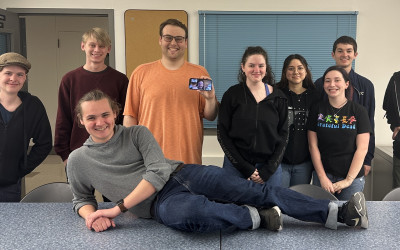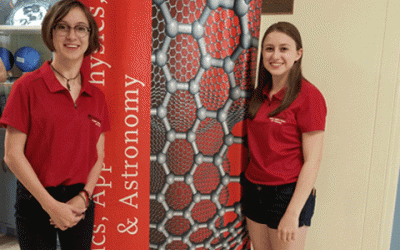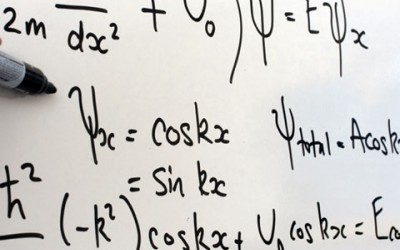Seventy-two credits beyond the bachelor’s degree are required. A manuscript on the thesis research should be prepared for publication. Admission to the Ph.D. program is granted only upon passing a written qualifying examination by the beginning of the third semester of Rensselaer graduate work. The advanced undergraduate-level exam is given in two parts: 1) Mechanics and Electrodynamics and 2) Quantum Mechanics, Thermodynamics, and Statistical Mechanics. The examination is given twice annually in August and January.
Doctoral requirements do not state a minimum number of course credits. However, students must take the basic core of four courses including PHYS 6410, PHYS 6510, PHYS 6520, and PHYS 6590. Students are expected to obtain a grade of at least B in each of these courses. In addition to the above sequence of core courses, there are the following doctoral course requirements. In addition to these core courses, each student must take 12 additional credits of technical electives at the 4000 and 6000 level, as approved by the student’s adviser and the Graduate Program Committee. Of these 12 credits, at least 6 credits must have a PHYS or ASTR prefix, and at least 6 credits must be at the 6000 level (a single class can be counted towards both requirements). In addition, in satisfying degree requirements, at least two-thirds of the total credit hours, excluding thesis, must contain the suffix numbers 6000-7999, with the further limitation that no more than 15 credit hours of 4000-4990 courses are to be allowed. Students must also pass the Physics Colloquium in four semesters. Note: PHYS 6530 is strongly recommended for all students (all theory students should take this course). There are special requirements for students specializing in astrophysics and biophysics.
Formal continuation in the Ph.D. program is granted only upon passing a written qualifying examination by the beginning of the third semester of Rensselaer graduate work. The advanced undergraduate-level exam is given in two parts:
* Mechanics and Electrodynamics
* Quantum Mechanics, Thermodynamics, and Statistical Mechanics.
The examination is given twice annually in August and January.
Please note that we waive the Ph.D. Qualifying Exam requirement for students who achieve a score of 700 or higher on the GRE Physics subject test, or with an A- or better on our corresponding core graduate courses taken here at RPI.
Once students have chosen a Ph.D. project and assembled a #committee, they will present a brief written thesis proposal to the #committee and orally defend it. In the oral exam, members of the #committee question students specifically on the planned research and more generally on the physics related to that research. This candidacy exam is normally taken at the end of the third year.
Some teaching experience is also required for the Ph.D. degree.




